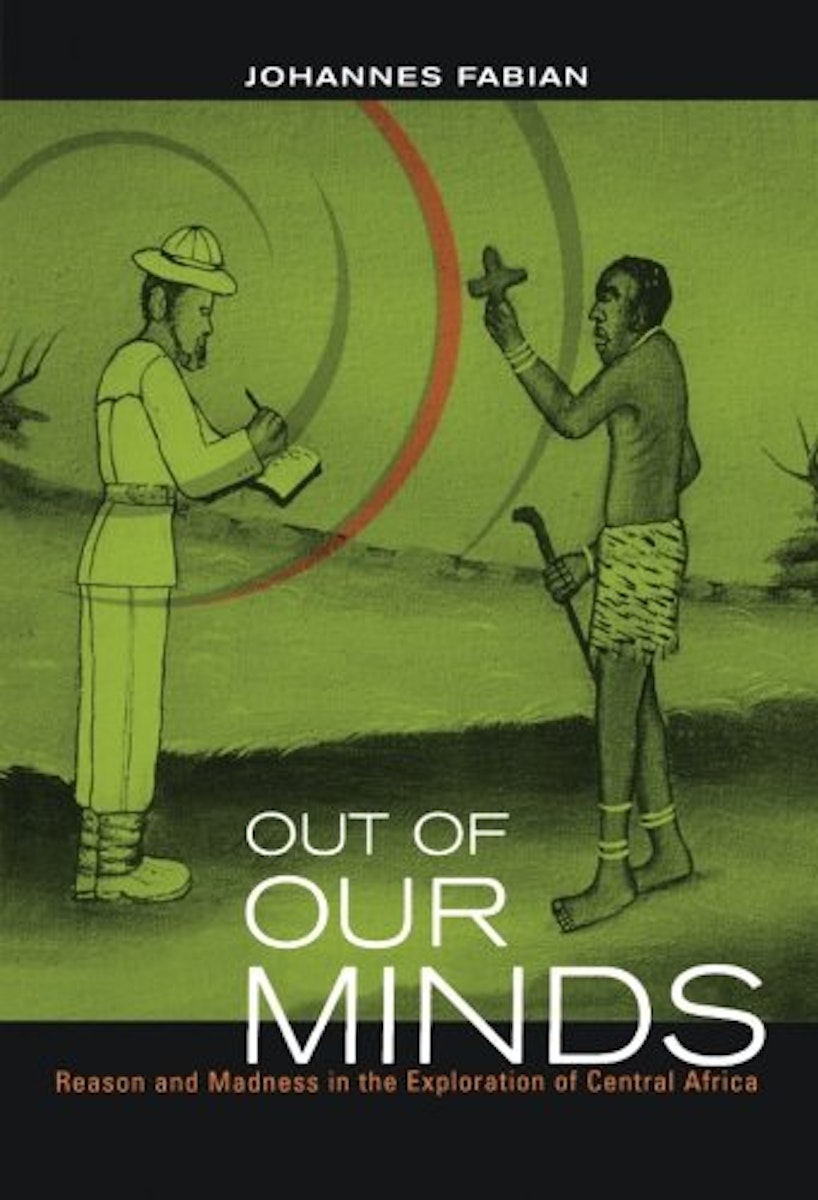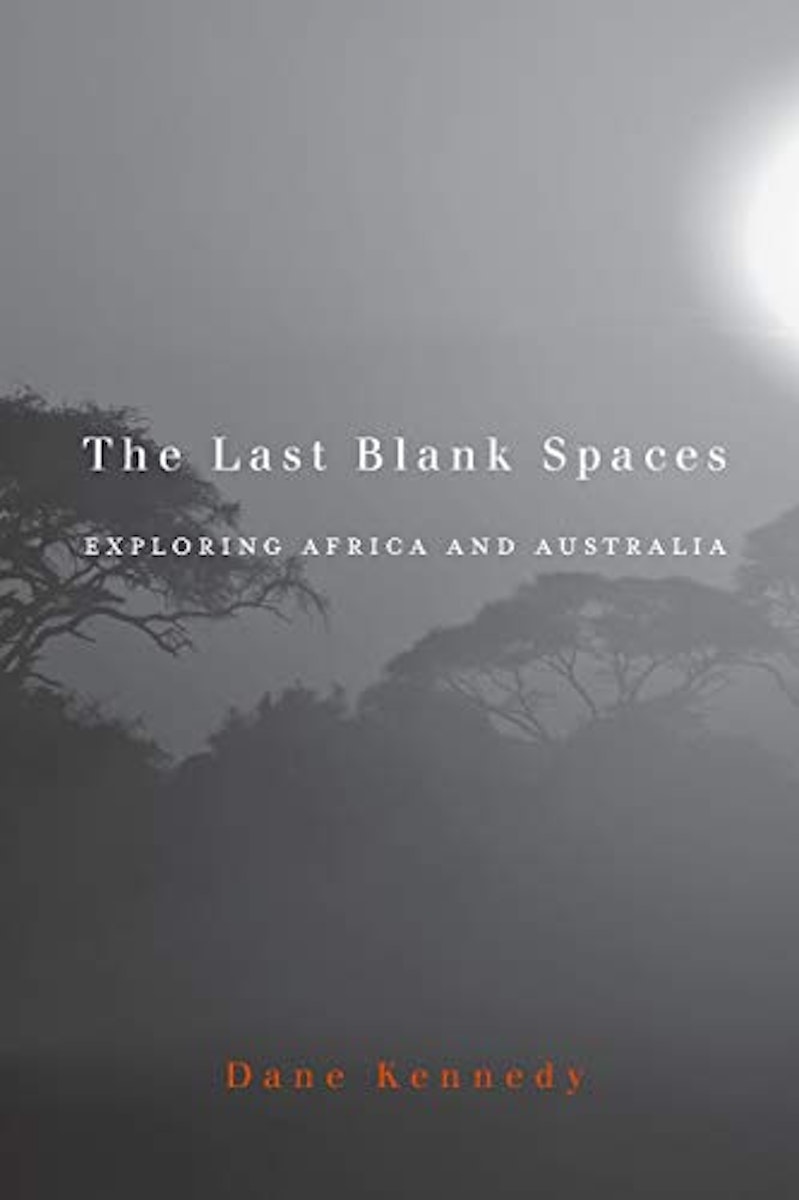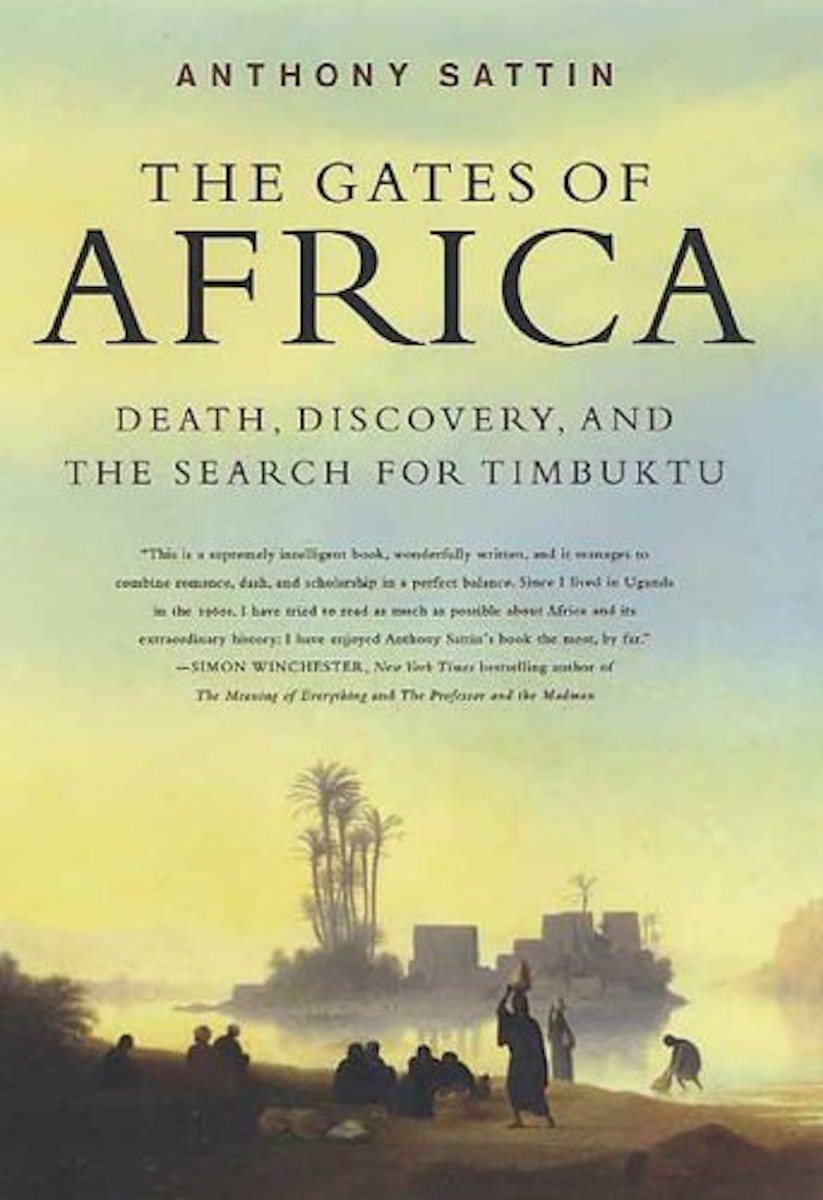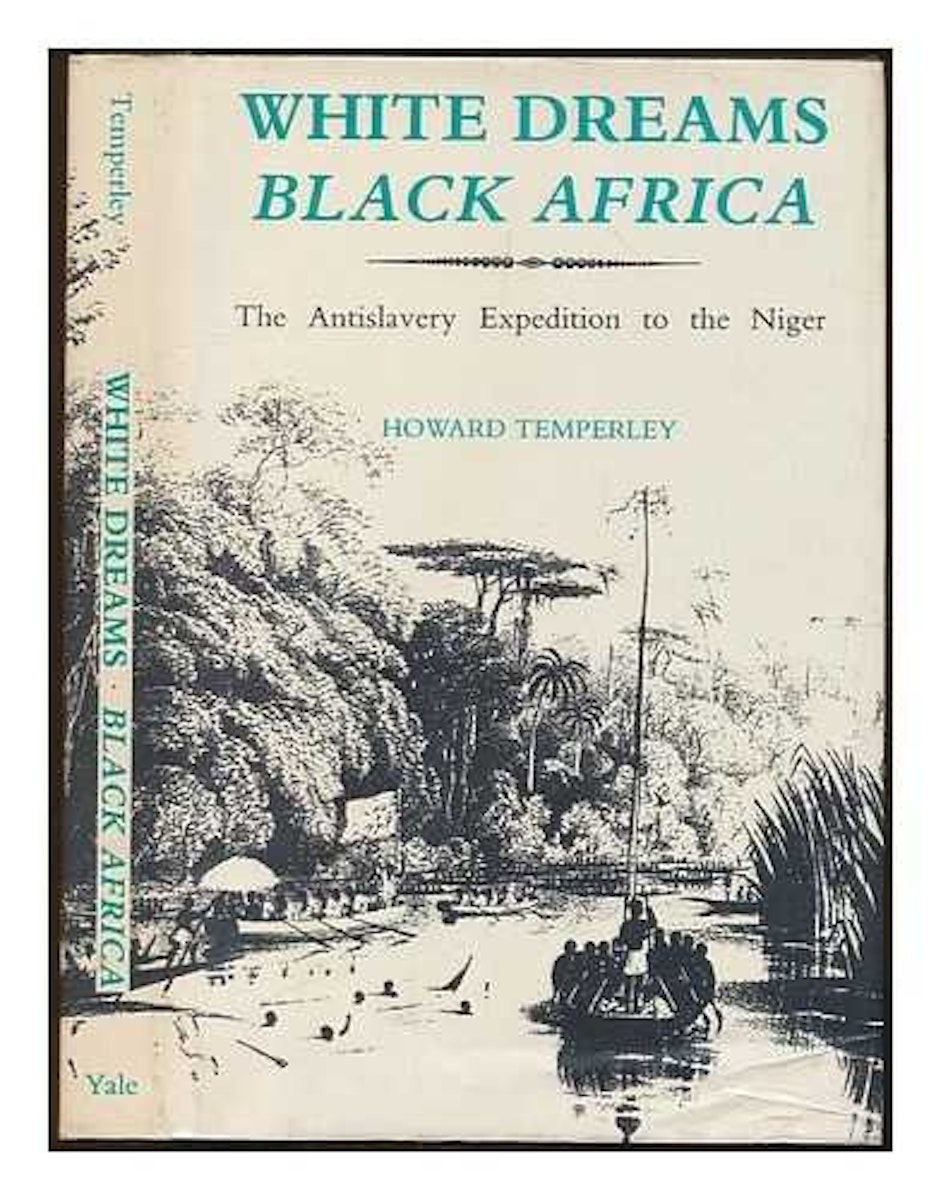
Forgotten Failures of African Exploration
Dane Kennedy reflects on two disastrous expeditions into Africa organised by the British in the early-19th century, and how their lofty ambitions crumbled before the implacable realities of the continent.
April 22, 2015
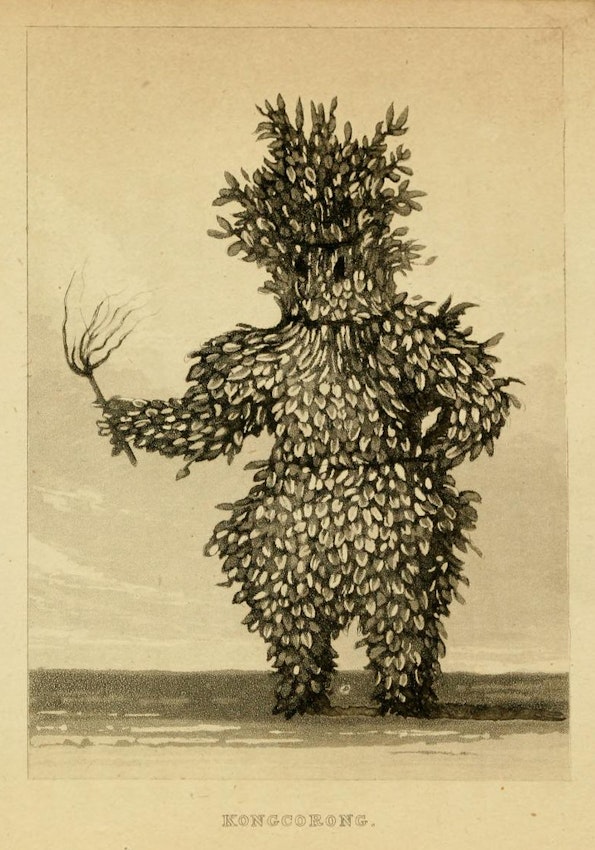 Scroll through the whole page to download all images before printing.
Scroll through the whole page to download all images before printing.A native of the Kayaye village, dressed head to toe in boughs and leaves as part of the Kongcorong ceremony. Featured in Major William Gray’s account of his doomed expedition in Africa — Source.
The exploration of Africa by the British is a story that has been told time and again, often in tiresome detail. We have shelves full of biographies of famous explorers like David Livingstone and Henry Morton Stanley, along with countless other books on the subject. These tales of adventure invariably end in the hero’s triumphant return to “civilization” or brave death in “darkest Africa”. Such stories were popular with the Victorian public, and they remain popular today. Yet some major African expeditions have never received much attention. These were expeditions that ended in ignominious failure. Because they undermine the triumphalist narrative of the European encounter with Africa, they have been all but erased from historical memory. For this reason alone, they deserve revisiting. They also happen to tell us a lot about what the British hoped to achieve in Africa, and why it proved such a challenge.
The Napoleonic wars had barely come to an end when in 1815 the British government sent two large, well-financed expeditions into the African interior. One was a naval expedition whose mission was to sail up the Congo River, break through its barrier of cataracts, and push as far upriver as possible. The other was an army expedition whose mission was to march inland from the Guinea coast, contact African states in the interior, and follow the Niger River to its outlet. Europeans still did not know where the Congo River began or the Niger River ended. Some geographers speculated that they were one and the same body of water, raising hope that the two expeditions might meet one another on their journeys. That hope, along with all the others authorities invested in the two expeditions, would be swept away by the implacable realities of Africa.
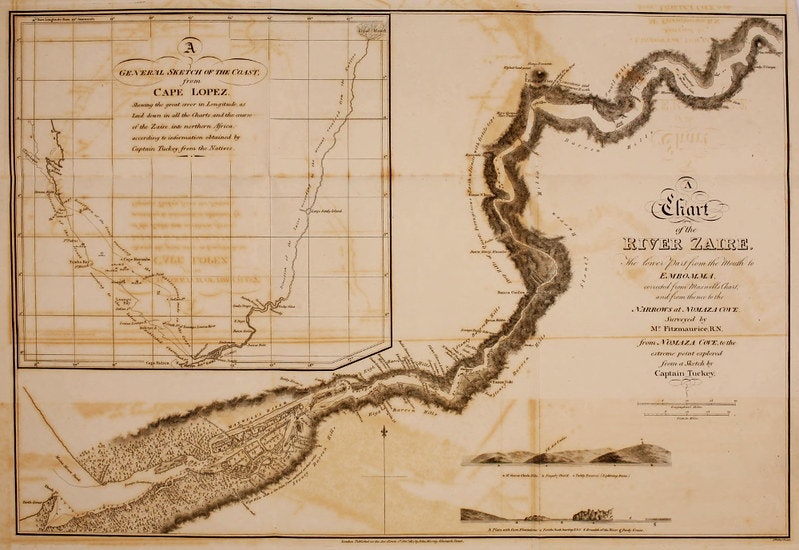 Scroll through the whole page to download all images before printing.
Scroll through the whole page to download all images before printing.Map of the Congo River (refered here as the River Zaire) featured in the front of Tuckey’s Narrative of an Expedition to Explore the River Zaire, Usually Called the Congo, in South Africa, in 1816 (1818) — Source.
What we know about the naval expedition comes mainly from the posthumous journals of its commander, James H. Tuckey, and its chief naturalist, Christen Smith, which were published as Narrative of an Expedition to Explore the River Zaire, Usually Called the Congo, in South Africa, in 1816 (London: John Murray, 1818). Like many naval expeditions of the era, it was presented as a scientific enterprise, sent out to gather knowledge about the natural world. Sir Joseph Banks, president of the Royal Society and leading proponent of scientific exploration, helped plan the expedition. He recruited Smith, a botanist trained at the University of Copenhagen, and recommended that Bolton and Watt build a steamship specially designed to carry its crew up the Congo. Though the steamship didn’t work out, the expeditionary party included, in addition to Smith, a zoologist, a geologist, a marine biologist, and a gardener from Kew. The book ends with a series of appendices detailing the hydrographic data, natural specimens, and ethnographic information collected by the expedition. Along with some of the book’s illustrations, the appendices testify to its scientific ambitions.
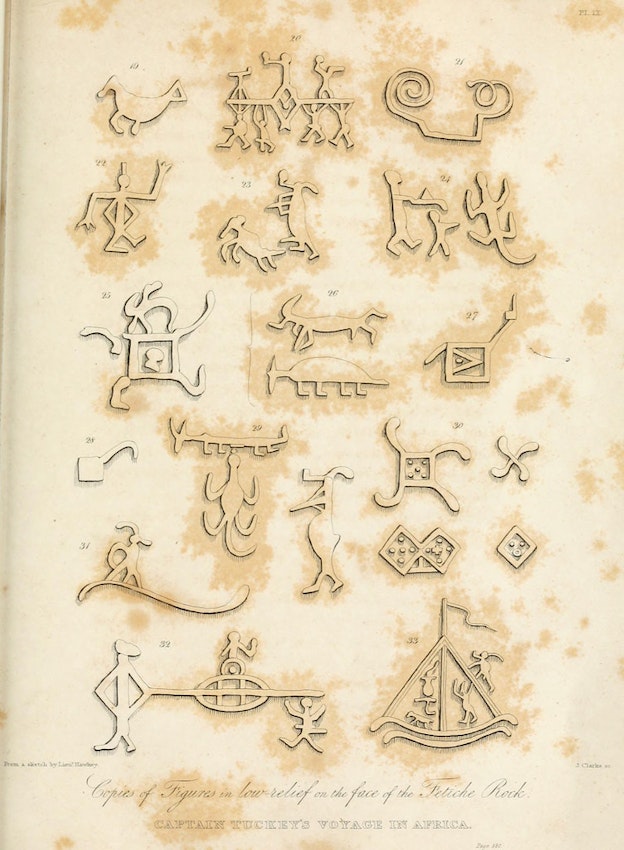 Scroll through the whole page to download all images before printing.
Scroll through the whole page to download all images before printing.One of the ethnographic details featured in the book — Source.
So what went wrong? First, the expedition encountered suspicion and resistance from those Africans whose cooperation it required. At Embomma, the main port at the mouth of the Congo, slave merchants declared that “our intentions could not be good, and that the King should . . . not let me ascend the river” (p. 109). They suspected that the expedition’s aim was to shut down the slave trade, a not unreasonable assumption in light of the British naval patrols that were sailing in West African waters with precisely this purpose in mind. Tuckey had to give “my assurances of not coming to prevent the slave trade, or to make war” (p. 110). Even so, slave traders repeatedly obstructed the progress of the expedition. The slave trade had other adverse effects. The expedition’s chief translator was a freed slave from the region who was reunited at Embomma with his father. Although he accompanied the expedition further upriver, he soon deserted, taking four Embomma porters with him. For all its claims of scientific neutrality, the expedition found itself inextricably enmeshed in the turmoil caused by the slave trade and its suppression.
The fatal blow, however, came as a result of the region’s dreaded disease environment. The party was struggling to bypass the cataracts by land when, one by one, its members fell ill. Tuckey’s party decided to turn back, but the return journey was “worse for us than the retreat from Moscow” (p. 222). His journal entries became briefer and less coherent. He was soon dead: so was Smith, his team of naturalists, and over a dozen officers and members of the crew. All had been swept away by yellow fever. In the words of John Barrow, the Admiralty official who had planned the mission, “never were the results of an expedition more melancholy and disastrous” (p. xliii).
While Tuckey’s journal details the ordeals he and men endured on the expedition, it also includes passages that suggest the sheer sense of wonder that he must have felt as he ventured up the Congo. In an early entry, he describes “the lofty mangroves overhanging the boat, and a variety of palm trees vibrating in the breeze; immense flocks of parrots alone broke the silence of the woods with their chattering, towards sun-set” (p. 91). And the final poignant sentence of his journal, written shortly before he died, observed: “Flocks of flamingos going to the south denote the approach of the rains” (p. 225).
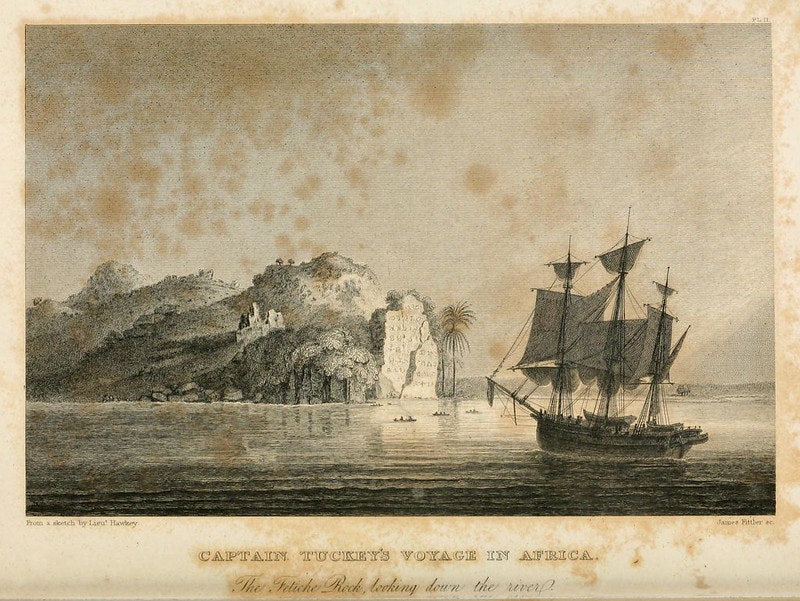 Scroll through the whole page to download all images before printing.
Scroll through the whole page to download all images before printing.Landscape featured in Tuckey’s Narrative of an Expedition to Explore the River Zaire, Usually Called the Congo, in South Africa, in 1816 (1818) — Source.
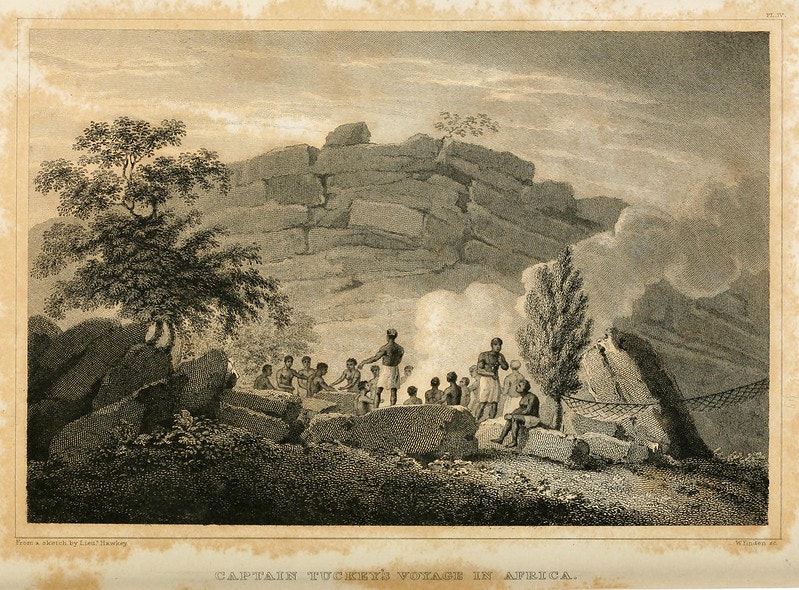 Scroll through the whole page to download all images before printing.
Scroll through the whole page to download all images before printing.Landscape featured in Tuckey’s Narrative of an Expedition to Explore the River Zaire, Usually Called the Congo, in South Africa, in 1816 (1818) — Source.
If the Congo expedition was a tragedy, then — to borrow Karl Marx’s famous dictum — the Niger expedition was a farce. It set out from a trading station at the mouth of the Rio Nunez River. Its aim was to march into the interior, establish diplomatic and trading relations with African kingdoms along the way, and follow the Niger downstream in the footsteps of Mungo Park, the Scottish explorer who had disappeared a decade earlier during his journey to trace the river’s course. The expedition consisted of 69 Royal African Corps troops (40 of them white, 29 black), 32 African civilians, 200 pack animals, several field cannon, various other weapons, a plentiful supply of gifts for local rulers, and the standard necessities for such a large force. Scientific objectives were less prominent in this expedition, though it did include a naturalist, the German Adolphus Kummer. The party was still in base camp when its commander, Major Peddie, succumbed to some sort of fever, as did another officer. Unbowed, the expedition set out under a new commander, Captain Campbell.
While disease posed a threat to the men, it proved even more deadly to the pack animals they used to carry their goods and supplies. Horses, donkeys, bullocks, and camels died off at an alarming rate. This proved to be the expedition’s undoing. It had moved scarcely a hundred miles into the interior when the losses reached crisis proportions. With nearly half its stock dead, it had to bury its field guns and appeal to the ruler of Futa Jallon for porters. This ruler, known as the Almamy, proved a shrewd negotiator. He repeatedly upped his demands for payment, withdrawing his porters on each occasion until the British gave in. He also placed crippling restrictions on the route the caravan wanted to take through his territory. It gradually dawned on Captain Campbell that the Almamy had no intention of allowing his party to reach its destination: he wanted to prevent the British from supplying his enemy, the kingdom of Sego, with arms. Eventually, the expedition was forced to abandon its supplies and retreat to the coast, where Captain Campbell promptly died, as did the officer who succeeded him.
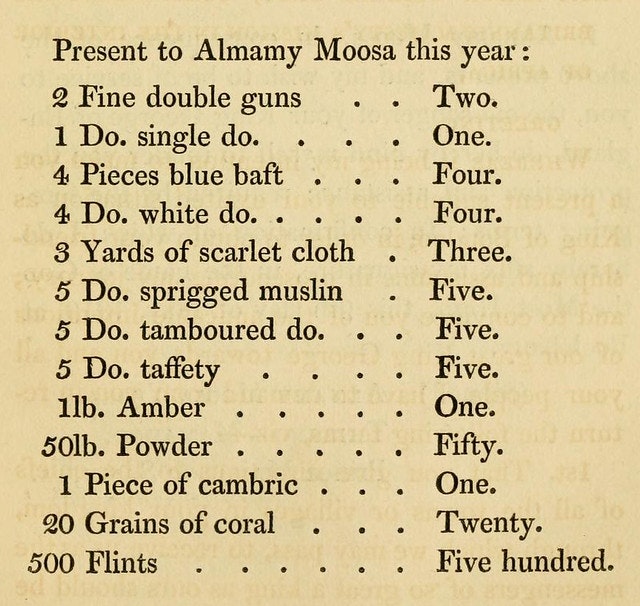 Scroll through the whole page to download all images before printing.
Scroll through the whole page to download all images before printing.A list of gifts offered to Almamy, featured in the Appendix to Travels in Western Africa in the Years 1818, 19, 20, and 21 from the River Gambia, through Woolli, Gondoo, Galam, Kasson, Kaarta, and Foolidoo, to the River Niger — Source.
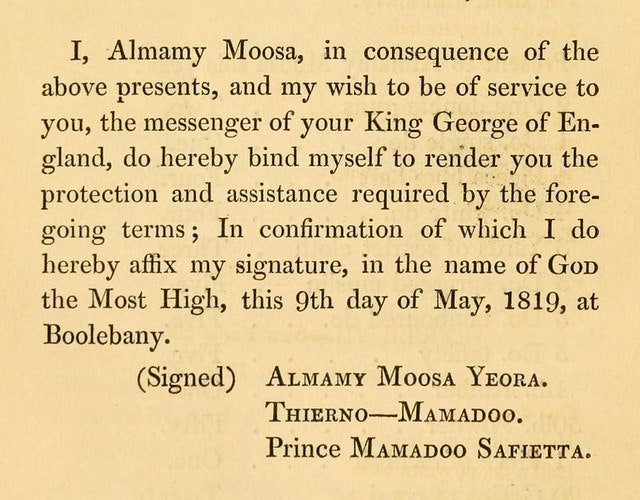 Scroll through the whole page to download all images before printing.
Scroll through the whole page to download all images before printing.Almamy’s letter of promise, which he promptly renegaded upon, featured in the Appendix to Travels in Western Africa in the Years 1818, 19, 20, and 21 from the River Gambia, through Woolli, Gondoo, Galam, Kasson, Kaarta, and Foolidoo, to the River Niger — Source.
End of story? Hardly. In an astonishing act of hubris, the British gave it another go, and with a stubbornness that beggars belief, they adopted the same strategy that had proven so disastrous the first time. Now under the command of Major William Gray, the expedition regrouped and set out from the mouth of the Gambia River, roughly a hundred miles north of its previous point of departure. Once again it relied on a train of pack animals to move its supplies, and once again they succumbed to diseases, parasites, and poisonous plants. Once again the expedition tried to hire porters from local rulers, and once again those rulers used this leverage to make extortionate demands for gifts and transit fees while working “to oppose our further progress” (p. 211). The rule of Kaarta actually began in fact to refer to “the whites [as] his tributaries” (p. 263). Throughout these ordeals, Gray continued to insist that he driven by a disinterested desire to reach the Niger and trace its course. “Whenever I spoke of the Niger, or my anxiety to see it,” Gray reports, his African interlocutors “asked me if there were no rivers in the country. . . we inhabit” (p. 349). Although the book he wrote about the expedition was titled Travels in Western Africa in the Years 1818, 19, 20, and 21 from the River Gambia, through Woolli, Gondoo, Galam, Kasson, Kaarta, and Foolidoo, to the River Niger (London: John Murray, 1825), he never actually set eyes on the Niger.
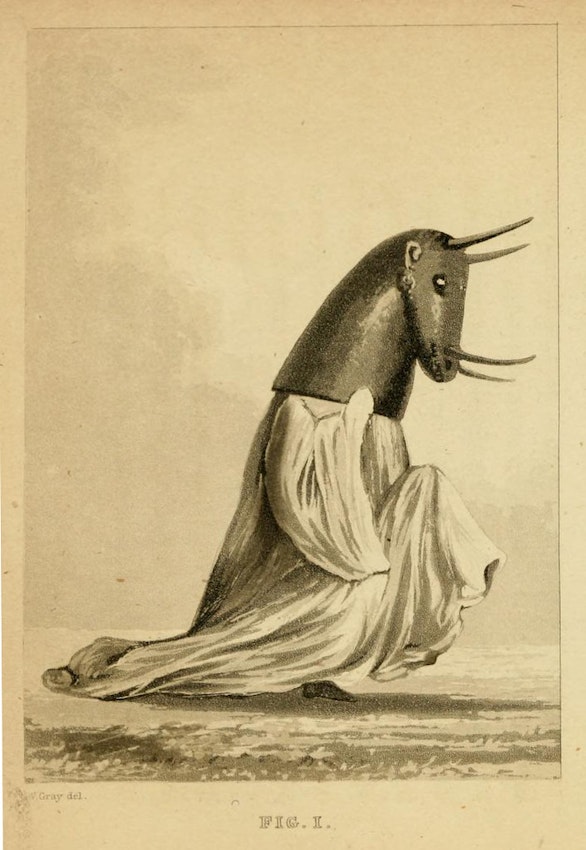 Scroll through the whole page to download all images before printing.
Scroll through the whole page to download all images before printing.Image of ceremonial attire featured in Travels in Western Africa in the Years 1818, 19, 20, and 21 from the River Gambia, through Woolli, Gondoo, Galam, Kasson, Kaarta, and Foolidoo, to the River Niger — Source.
Like its naval counterpart, this land expedition ran into resistance from local elites who feared that the British would interfere in their slave trading operations. It also found that it had entered an environment plagued by wars between neighboring states, making passage through the region nearly impossible. Grey finally swallowed his pride and appealed for rescue to the French, whose influence in the region the British had sought to supplant. The forlorn party finally returned to the coast a full six years after the original expedition had set out. The long endeavor had proven a costly, ignominious failure.
These were the two most ambitious expeditions the British would undertake in Africa until the equally disastrous Niger expedition of 1841. Though their failure was an embarrassment that the British quickly erased from their collective memory, these expeditions are no less worthy of attention than the West African expeditions that made household names of Mungo Park, Hugh Clapperton, John Lander, and others. They are in some respects more illuminating than their more successful counterparts about the mix of motives that drove the British to explore Africa. Science—geographical science in particular—certainly played a prominent role, but so too did various other considerations. Both expeditions were driven by a desire to establish a new relationship with Africa and Africans in the aftermath of the abolition of the slave trade. These probes of the main river systems of West and Central Africa sought highways into the interior that could facilitate alternative trading opportunities. Establishing diplomatic relations with states in the African interior was part of this strategy, but it also presumed that force might be required. This was why the army expedition was so large and heavily armed. It was prepared to engage in colonial conquest. Similarly, the commander of the naval expedition believed that “the progress of civilization [in Africa] can only be done by colonization” (p. 187).
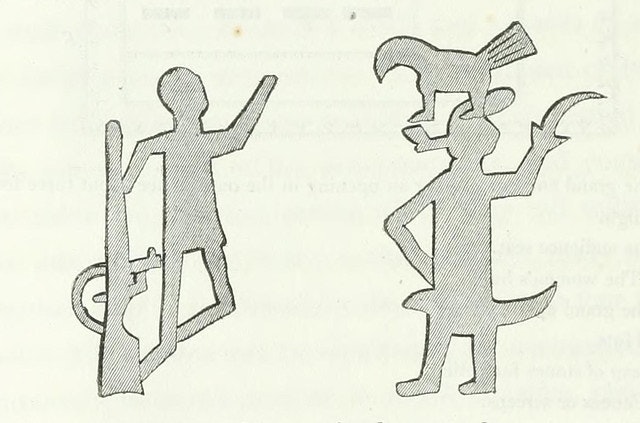 Scroll through the whole page to download all images before printing.
Scroll through the whole page to download all images before printing.Sculpted figures from the Chenoo, depicting two war fetiches, one armed with a musket, the other with a broad sword. Featured in Tuckey’s Narrative of an Expedition to Explore the River Zaire, Usually Called the Congo, in South Africa, in 1816 (1818) — Source.
Yet the failure of both expeditions to achieve their objectives exposed the stark disparity between ambition and achievement. The British still lacked the capacity to enter the continent and intervene in its affairs in any meaningful way. In part, this was due to the African disease environment, which proved so destructive to both expeditions. But it was also due to the strength and resourcefulness of African states and peoples: they were able to obstruct and undermine the objectives of the British at every turn. The most successful explorers were those who recognized their vulnerability and worked in careful collaboration with indigenous parties. What the two expeditions discussed here demonstrate is that the explorers of Africa may have been the harbingers of colonial conquest, but they were hardly its agents.
Dane Kennedy teaches British and British imperial history at George Washington University and serves as director of the National History Center. His books include The Last Blank Spaces: Exploring Africa and Australia and, as editor, Reinterpreting Exploration: The West in the World.





